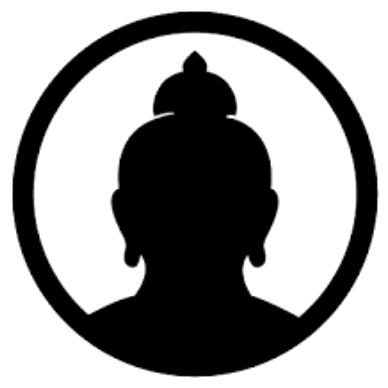The opposition is cast as one between cis-girl athletes on the one hand and a vast liberal conspiracy on the other.
YOU MIGHT ALSO LIKE
CLEAR ALL
BY TOPIC
BY TYPE
FILTER

TOPIC
- Coming Out (29)
- Gender Discrimination (29)
- Gender Identity (29)
- Nonbinary Well-Being (29)
- Emotional and Mental Health (27)
- Kids and Sports (26)
- Performance Pressure (24)
- Well-Being (23)
- Gender Challenges (21)
- Women’s Well-Being (19)
- Black Well-Being (18)
- Disabled Well-Being (18)
- Homophobia (18)
- Self-Pressure (18)
- Body Image (17)
- LGBTQIA Sexuality (16)
- Illness and Injury (15)
- Creative Well-Being (14)
- Eating Disorders (13)
- Gender Justice (13)
- LGBTQIA Children (13)
- Peak Performance (12)
- Social Justice (12)
- Activism/Service (11)
- Anxiety (11)
- Depression (11)
- Parenting (11)
- Self-Expression (11)
- Addiction (10)
- Aging (10)
- Female Empowerment (10)
- Mindfulness (10)
- Self-Acceptance (10)
- Authenticity (9)
- Courage (9)
- Diet and Nutrition (9)
- Exercise (9)
- Family Acceptance (9)
- Gender and Spirituality (9)
- Life Challenges (9)
- Motherhood (9)
- Racism (9)
- Self-Esteem (9)
- Burnout (8)
- Goal Setting (8)
- Happiness (8)
- Neurodiversity (8)
- Physical Health (8)
- Pleasing Parents (8)
- Self-Care (8)
- Social Responsibility (8)
- Speaking Your Truth (8)
- Betrayal (7)
- Buddhism (7)
- Indigenous Well-Being (7)
- Inspiration (7)
- Life-Altering Injury (7)
- Performance Anxiety (7)
- Racial Discrimination (7)
- Resilience (7)
- Young Adult Well-Being (7)
- Belonging (6)
- Chronic Pain (6)
- Clinical Depression (6)
- Criticism and Rejection (6)
- Gender Transition (6)
- Gratitude (6)
- Grit (6)
- Mind-Body Connection (6)
- Neuroscience (6)
- Plateauing (6)
- Racial Justice (6)
- Search for Purpose (6)
- Stress Management (6)
- Work Challenges (6)
- Autism (5)
- Cross-Cultural Dynamics (5)
- Endurance (5)
- Fellowship and Community (5)
- Identity (5)
- Imagination and Creativity (5)
- Masculine/Feminine Dynamics (5)
- Meditation (5)
- Mindfulness Practices (5)
- Offering Support to Others (5)
- Regret (5)
- Self-Worth (5)
- Suicide (5)
- AAPI Well-Being (4)
- Acceptance (4)
- Chronic Anxiety (4)
- Compassion (4)
- Confidence (4)
- Conflict Resolution (4)
- Drug Addiction (4)
- Failure (4)
- Faith and Identity (4)
- Growth Mindset (4)
- Habits of Mind (4)
- Inner Strengths (4)
- Latinx Well-Being (4)
- Leadership (4)
- Letting Go (4)
- LGBTQIA Parents (4)
- Men’s Well-Being (4)
- Mental Health Challenges (4)
- Mentoring (4)
- Motivation (4)
- Reproductive Health (4)
- Setting Limits and Boundaries (4)
- Stress (4)
- Work-Life Balance (4)
- ADD/ADHD (3)
- Anger Management (3)
- Body Positivity (3)
- Cancer (3)
- Climate Change (3)
- Community Healing (3)
- Connection with Nature (3)
- Decision Making (3)
- Digital Life (3)
- Empowerment (3)
- Focus (3)
- Healthy Eating (3)
- LGBTQIA Relationships (3)
- Loneliness (3)
- Mindfulness Meditation (3)
- Positive Thinking (3)
- Race and Gender (3)
- Self-Actualization (3)
- Self-Development (3)
- Self-Love (3)
- Sexual Assault or Abuse (3)
- Unconscious Bias (3)
- Visualization (3)
- Addiction Recovery (2)
- AIDS (2)
- Anorexia (2)
- Brain Health (2)
- Caregiver Well-Being (2)
- Child’s ADD/ADHD (2)
- Child’s Emotional Growth (2)
- Children’s Well-Being (2)
- Christianity (2)
- Collaboration (2)
- Consciousness (2)
- Cross-Cultural Parenting (2)
- Divorce and Breakup (2)
- Emotional Intelligence (EQ) (2)
- Family Dynamics (2)
- Feminism (2)
- Generosity (2)
- Global Challenges (2)
- Higher Calling (2)
- Inner Peace (2)
- Islam (2)
- Kindness (2)
- Neuroplasticity (2)
- Patience (2)
- Perception (2)
- Personal Development (2)
- Positive Self-Talk (2)
- Poverty/Economic Inequality (2)
- Psychology (2)
- Racial Healing (2)
- Racial Identity (2)
- Relationship with Time (2)
- Retirement (2)
- Ritual (2)
- Self-Control (2)
- Self-Healing (2)
- Self-Limiting Beliefs (2)
- Self-Mastery (2)
- Sexuality (2)
- Sleep (2)
- Spiritual Awakening (2)
- Spirituality and Politics (2)
- Suffering (2)
- The Yips (2)
- Transitions (2)
- Trauma Healing (2)
- Veteran Well-Being (2)
- Vulnerability (2)
- Whiteness (2)
- Women’s Rights (2)
- Yoga (2)
- Access to Education (1)
- Acupressure (1)
- Awareness (1)
- Biohacking (1)
- Breathwork (1)
- Buddha Nature (1)
- Bulimia (1)
- Bullying (1)
- Cannabis/CBD (1)
- Child’s Anxiety (1)
- Cognitive Behavioral Therapy (1)
- Communication Skills (1)
- Compassion Meditation (1)
- Competition (1)
- Curiosity (1)
- Death or Loss of a Loved One (1)
- Death or Loss of a Parent (1)
- Drug Policy (1)
- Emotional Labor (1)
- Faith (1)
- Fatherhood (1)
- Fatigue (1)
- Female Friendship (1)
- Finding Meaning (1)
- Forest Bathing (1)
- Forgiveness (1)
- Habit Formation (1)
- Ibogaine (1)
- Identity Shifts (1)
- Immigration and Assimilation (1)
- Imposter Syndrome (1)
- Integrative Medicine (1)
- Intention (1)
- Interdependence (1)
- Job Loss (1)
- Journaling (1)
- Joy (1)
- Ketamine (1)
- Learning Styles (1)
- Living with Illness (1)
- Longevity (1)
- Loss of Partner/Spouse (1)
- Love (1)
- Lovingkindness Meditation (1)
- Managing Energy (1)
- Marriage (1)
- Memoir (1)
- Midlife Crisis (1)
- Negative Self-Talk (1)
- Neuropsychology (1)
- Obsessions/Compulsions (1)
- Optimism (1)
- Passion (1)
- Personality Disorders (1)
- Problem Solving (1)
- Productivity (1)
- Raising Nonbinary Children (1)
- Raising Sons (1)
- Rest (1)
- Self-Compassion (1)
- Self-Discovery (1)
- Self-Reckoning (1)
- Self-Reflection Practices (1)
- Sex (1)
- Shadow (1)
- Shame (1)
- Social Media Addiction (1)
- Social Presence (1)
- Social Psychology (1)
- Soul Mission (1)
- Spiritual Development (1)
- Spiritual Growth (1)
- Spiritual Quest (1)
- Spirituality and Health (1)
- Stoicism (1)
- Subconscious (1)
- The Feldenkrais Method (1)
- Time Management (1)
- Toxic Relationships (1)
- Trust (1)
- Unfulfilled Career (1)
- Values (1)
- Wake-Up Calls (1)
- Willpower (1)
- Yoga Nidra (1)
- Zen Buddhism (1)
FILTER

TEACHER
- Alok Vaid-Menon (2)
- Gloria Steinem (2)
- La Sarmiento (2)
- Larry Yang (2)
- Richard Davidson (2)
- Sharon Kleinbaum (2)
- Simone Biles (2)
- amina wadud (1)
- Amma (1)
- Amy Morin (1)
- Andrew Solomon (1)
- angel Kyodo williams (1)
- Chalene Johnson (1)
- Chelsey Luger (1)
- Connie Zweig (1)
- Deepak Chopra (1)
- Forrest Hanson (1)
- James Baraz (1)
- JoAnn Loulan (1)
- Kamilah Majied (1)
- Kareem Abdul-Jabbar (1)
- Kathryn Budig (1)
- Kelly McGonigal (1)
- Lama Rod Owens (1)
- Lewis Howes (1)
- Light Watkins (1)
- Megan Rapinoe (1)
- Moshé Feldenkrais (1)
- Norman Fischer (1)
- Oprah Winfrey (1)
- René Rivera (1)
- Scott Shute (1)
- Serena Williams (1)
- Sherin Khankan (1)
- Toni Bernhard (1)









